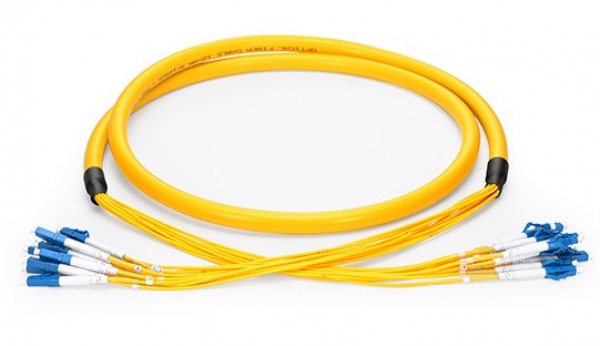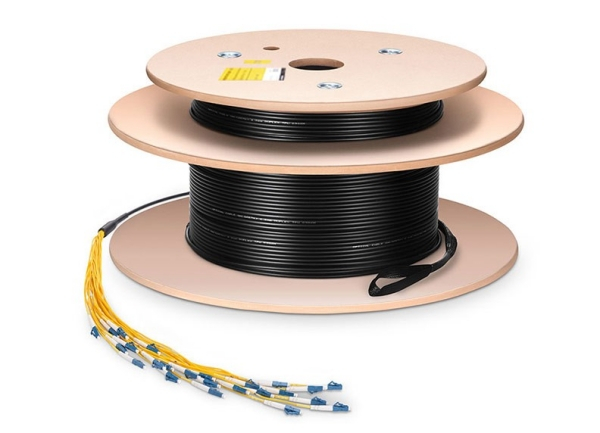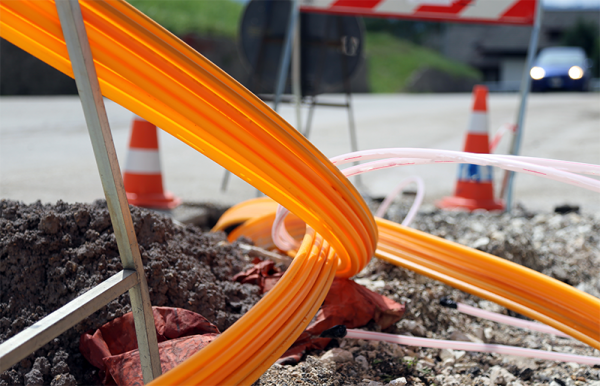How is fiber optic internet installed?
Cannot be denied that our world today is built upon the rapid transfer of vast amounts of information. Many decades ago, data was transmitted from one network device to another through copper wires. But today, fiber optic cables are gradually replacing copper wires as a more optimal medium for data transmission. With high bandwidth, low power loss, lightweight, etc., fiber optic cables have become popular among network service providers and are widely applied in today's network cabling systems. Although there are many advantages, this does not mean that installing fiber optic cables is without concerns. This article by Gpwebmedia.net will list the main installation tips for reference and provide you with some advice on installing network cabling systems in various places such as in conduits, on ceilings, or under floors.
Where fiber optic cables are used, they can be divided into indoor fiber optic cables and outdoor fiber optic cables.
Indoor Fiber Optic Cables
These cables are commonly used in buildings, offices, and homes because they need to be flexible, convenient, and not too costly. Indoor fiber optic cables are less affected by environmental factors such as temperature or physical impacts compared to outdoor cables, and their main characteristic is fire resistance.

Outdoor Fiber Optic Cables
There are several types of outdoor fiber optic cables depending on the environment of use, such as underground fiber cables, direct-buried fiber cables, and aerial fiber cables, each with different designs and features to suit the specific environment.
1. Underground Fiber Cables
Underground fiber cables are usually pulled through a conduit buried underground, typically 1 to 2 meters deep, to reduce the risk of being dug up or subjected to external physical impacts. Lubricant is added to the design of underground fiber cables to reduce friction when a large pulling force is applied.
2. Direct-Buried Fiber Cables
Direct-buried cables are also buried underground like underground cables but without a conduit. Therefore, these cables must be resistant to dust, pressure, or gnawing. Compared to underground cables with conduits, direct-buried cables are more robust.
3. Aerial Fiber Cables
Aerial cables are installed from poles, mounts, or attached to buildings. The deployment environment protects aerial cables from human-induced damage or theft but increases the risk of destruction by natural elements such as storms, wind, and snow.
4. Submarine/Underwater Fiber Cables
Submarine or underwater fiber cables must be able to protect against water and moisture, which are calculated for the specific outdoor environment in which they are installed. Considering this factor, most underwater cables today are manufactured with gel, absorbent powder, or tape, often applied to loose tubes or tape cables.

Although there are many differences between indoor and outdoor fiber optic cables, some cables today are designed to meet harsh outdoor environments while also satisfying indoor rating requirements.
Fiber Optic Cable Installation
1. Conduit
Conduits can be used indoors in walls, ceilings, and outdoors, especially for underground cables. It is inflexible to install conduits, making it difficult to move, add new, and change. When pulling cables in conduits, all transition points must be kept smooth. Try to leave extra conduit outside the transition to keep the cables from laying on a sharp edge. Or you can use inner duct or flexible conduit to keep the cables from being damaged. You also need pull boxes to pull and run cables for the next conduit length. For easy installation, hooks or pull wires must always be placed in the conduit.

Note: The inside radius of the conduit bend should be at least 10 times the cable diameter. The conduit length should be limited to 30m, with no more than two 90-degree bends between pull points or boxes.
2. Dropped Ceilings and Raised Floors
Installing fiber optic cabling in dropped ceilings or raised floors can be the easiest. Dropped ceilings consist of lightweight panels supported by a metal frame or grid system mounted on the ceiling. Usually, these panels can be easily moved out of the way when pushed up. Then, there is ample space for installing other equipment. Fiber cables in these spaces need to be supported and well-organized. You should use some tools to easily manage fiber optic cables, such as trays, J-hooks, and cable ties.
3. Cable Trays
Cable trays or ladder racks provide a convenient, safe, and efficient place to install fiber optic cables. Trays can be installed in ceilings, under floors, and in riser shafts. Cable trays can provide good support and protection for cables. When running cables in trays, it is better to avoid tension, crushing, and bending as much as possible. Ensure that cable routes avoid sharp bends (sometimes from other cables) and rough surfaces. Try not to pull cables under or between heavier cables or multiple cables that can create large tension. Don't forget to secure the cables to the tray with cable ties to avoid damage during installation or changes.
4. Riser Cables
For vertical cabling systems in risers, if possible, use at least OFNR-rated cables. When pulling cables vertically, use some devices to support the cables without damaging the core. Cables should be supported with other cables in the wiring closet. Start installation from top to bottom; it will be easier than pulling cables from the opposite direction. Cable handling procedures may differ by manufacturer. So, follow the manufacturer's instructions first.
Only fiber optic cables, with their long range, reliability, space-saving, immunity to interference, and relatively low cost, can help public network operators and enterprises control their budgets and provide high-quality services at faster speeds.
